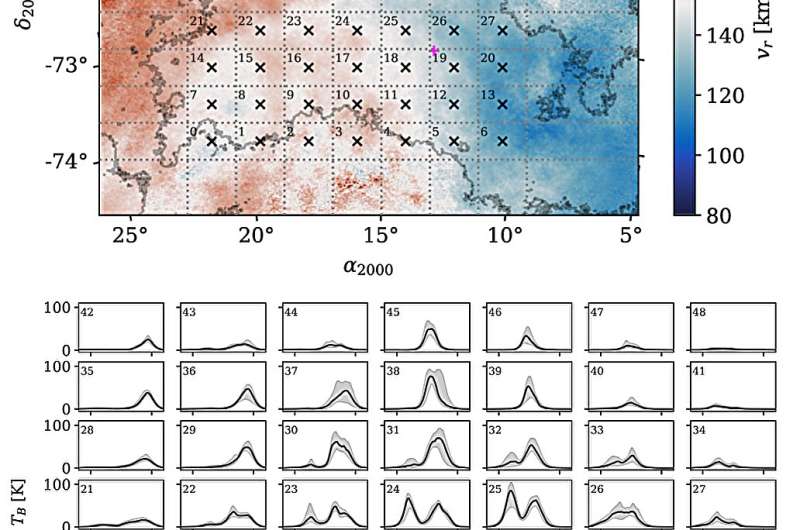December 27, 2023 report
This article has been reviewed according to Science X's editorial process and policies. Editors have highlighted the following attributes while ensuring the content's credibility:
fact-checked
preprint
trusted source
proofread
New study shows Small Magellanic Cloud is actually two smaller galaxies

A large international team of astronomers and astrophysicists has found evidence showing that the Small Magellanic Cloud is not a single galaxy—it is actually two, one behind the other. The group has written a paper describing their work and posted it to the arXiv preprint server.
The Magellanic Clouds have for many years been known as two irregular dwarf galaxies that can be seen as appearing very close to one another in the southern celestial hemisphere. They have also been named individually as the Large and Small Magellanic Clouds, based on their sizes. In the late 1980s, some evidence arose suggesting that the Small Magellanic Cloud (SMC) was not one, but two dwarf galaxies. In this new effort, the researchers have found more evidence, showing that the SMC is indeed two small dwarf galaxies.
To learn more about the SMC, the research team first studied data from the ESA's space-based Gaia observatory that allowed them to make estimations of the average velocity of the stars in various parts of the SMC. Next, they studied data from the Galactic Australian Square Kilometer Array Pathfinder, a radio telescope array in Western Australia, which allowed them to learn more about the Interstellar Medium in both the SMC and LMC. They also analyzed data from the APOGEE survey, which came courtesy of duel 300-fiber spectrographs at the Sloan Foundation Telescope and the NMSU Telescope, both of which are located at the Apache Point Observatory in New Mexico.
Looking at all the evidence, the researchers found the chemical composition of two "parts" of the SMC to be distinct. They also found the two parts had different velocities, with those moving faster in what appeared to be a closer part of the galaxy, and they found that the two parts had roughly the same mass and that both parts were interacting with the LMC.
Taken together, the researchers concluded, that the evidence points very strongly to two unique galaxies, one nearly behind the other relative to Earth. The positioning, they note, explains why it was not noticed until relatively recently that the SMC was likely two galaxies.
The research team also calculated that the closer of the two galaxies is approximately 199,000 light years away, while the more distant of the pair is approximately 215,000 light years away.
More information: Claire E. Murray et al, A Galactic Eclipse: The Small Magellanic Cloud is Forming Stars in Two, Superimposed Systems, arXiv (2023). DOI: 10.48550/arxiv.2312.07750
Journal information: arXiv
© 2023 Science X Network





















